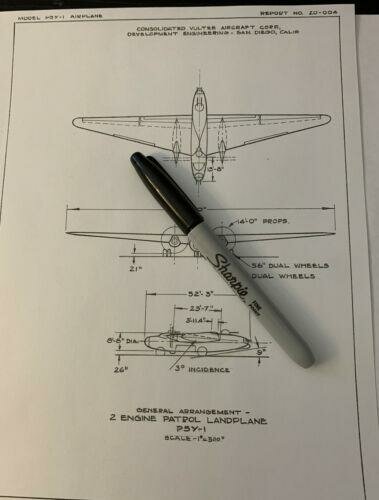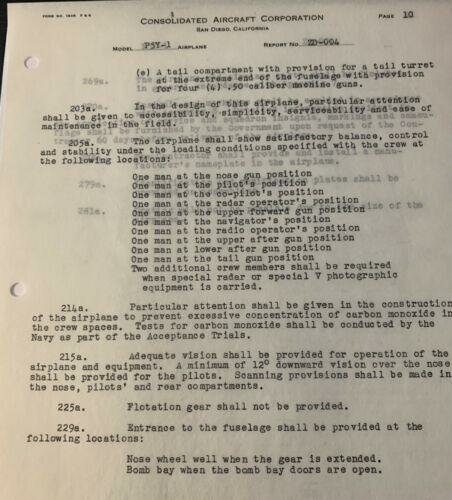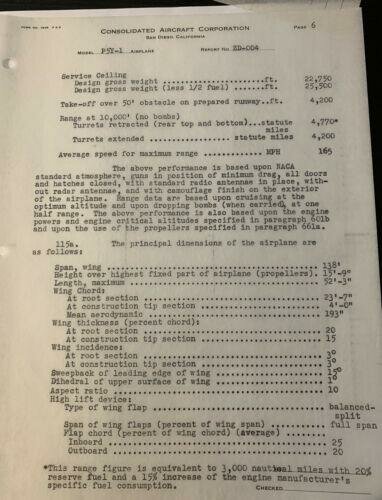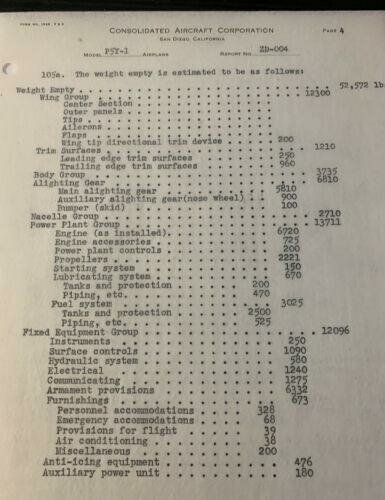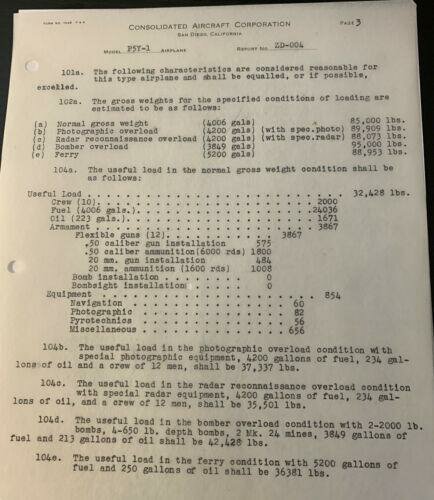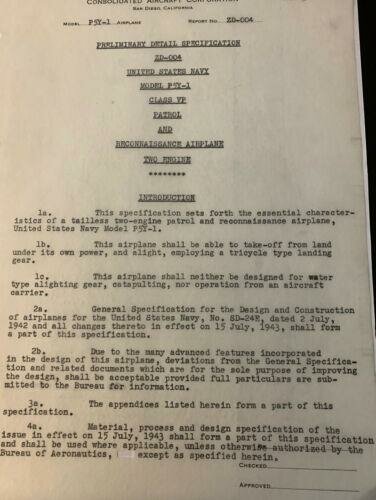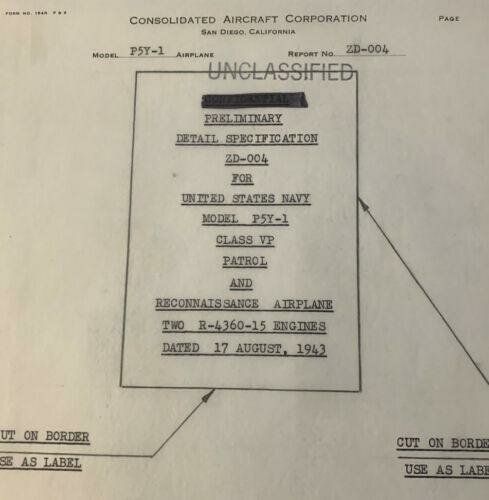This might be old news by now but ... according to Alan Griffith (aka
ACResearcher), there were at least three proposals for Consolidated flying wings. The first was a Sept 1941 twin-engined bomber wing a 130 foot span for the USAAC. This variant was later pitched to the US Navy as a "so-called 'Patrol Bomber', Consolidated designation P5Y1". Consolidated was quite persistent with their 'P5Y1". A 1944 brochure for a "
Performance Report Two Engine Patrol Landplane Tailless Type" appeared on eBay"
http://www.ebay.com/itm/RARE-CONSOLIDATED-REPORT-ON-TAILLESS-AIRCRAFT-/291040911366
"Another variant was to have a wingspan of 134 feet with a gross weight of 90,000lbs. This version was tested in GALCIT wind tunnel in 1943." This would be the version illustrated here.
"Finally, there was a 180,000lb, 180ft wing span beast sporting four engines. This final version was to have a range of 7500 miles."
http://www.hyperscale.com/2015/reviews/books/amsecprojbookpreview_1.htm
According to Claus Reuter (
The Development of the Heavy Bomber 1918-1944, page 61), the final, 180 foot span concept was to have each of four buried turbocharged tractor engines driving its own counter-rotating propellers through extension shafts. This bomber would have been highly loaded but control on landing was to be aided by full-span flaps and retractable horizontal tail surfaces.
Crew positions were to be pressurized, including the turrets. Defensive armament was to consist of a nose turret (4 x .50-cal), dorsal and ventral turrets (each with 2 x 37mm cannons). Normal offensive armament load would be 5,000 lbs with a crew of 9 flying at 240 mph over 7,500 miles. Up to 40,000 lbs could be carried over 3,500 miles. Gross weight was about 180,000 lbs.
A variation on the theme had a large, central tailfin. See '
Free Flight Tests of a Consolidated-Vultee Tailless Model', NASA Langley CRGIS video:
https://www.youtube.com/watch?v=bjYKWtOZ7wE